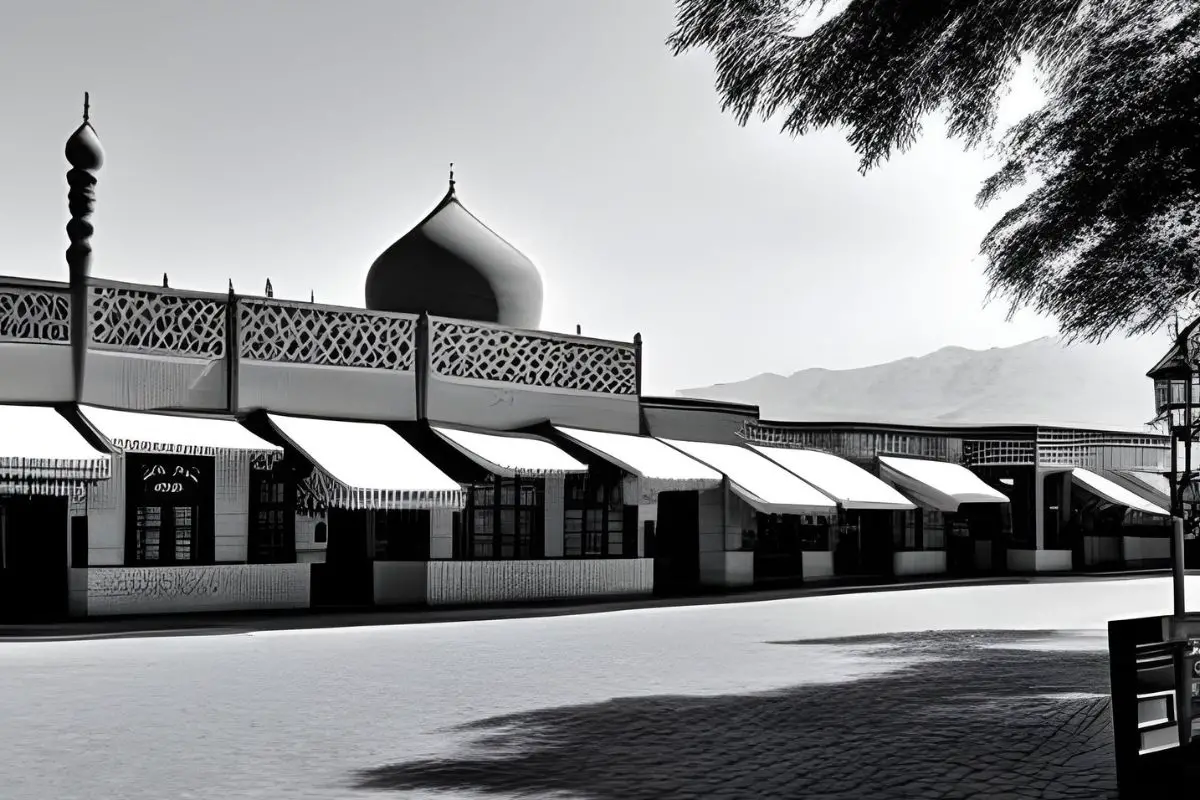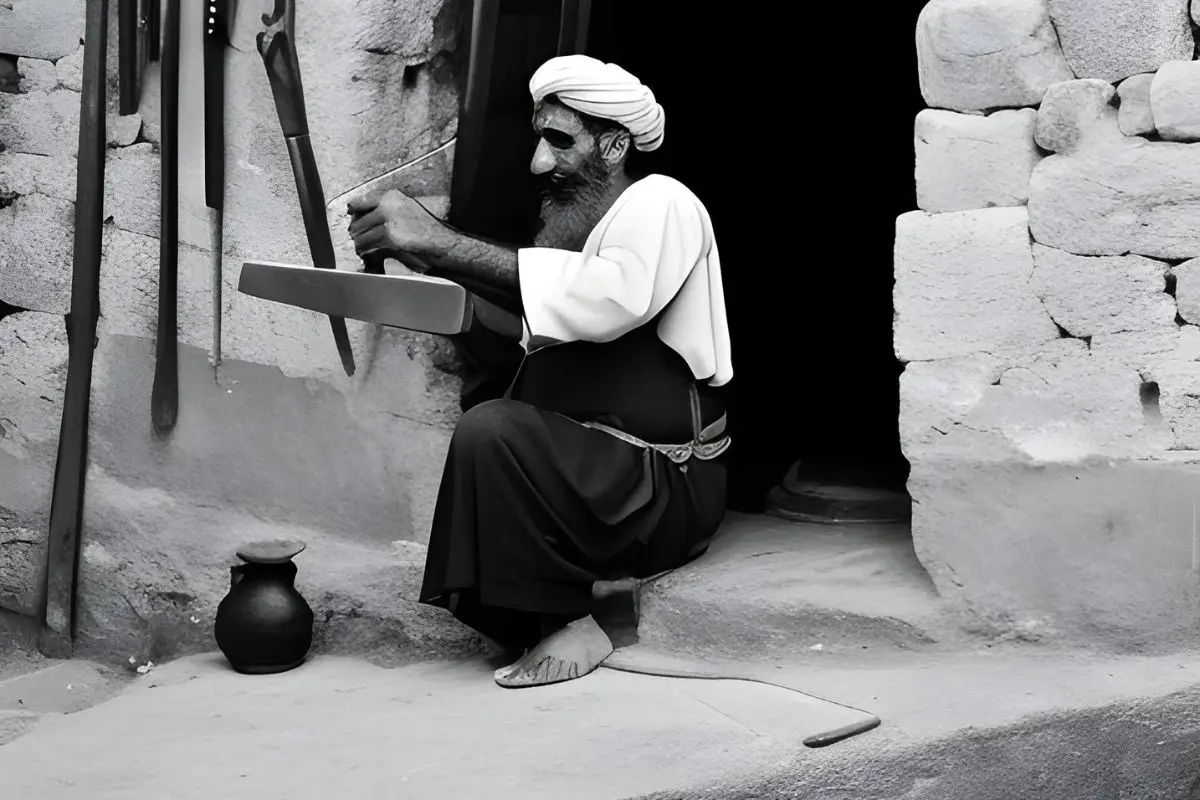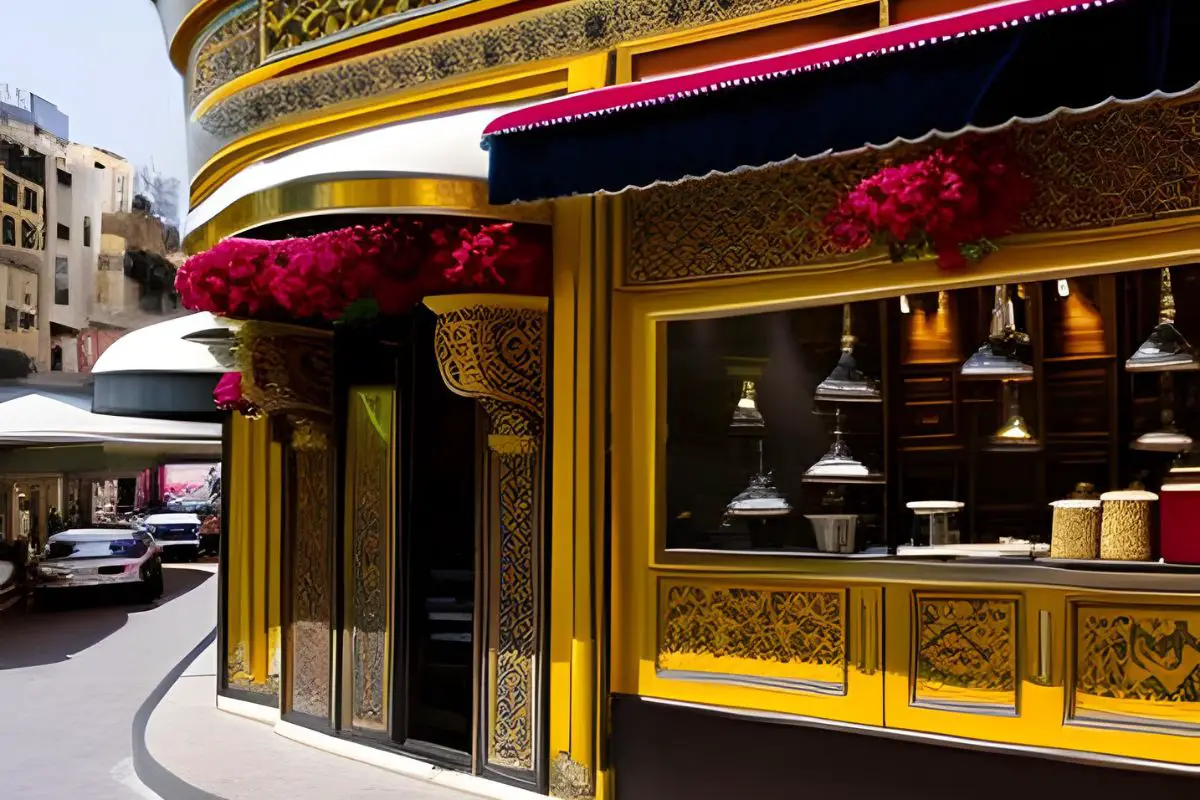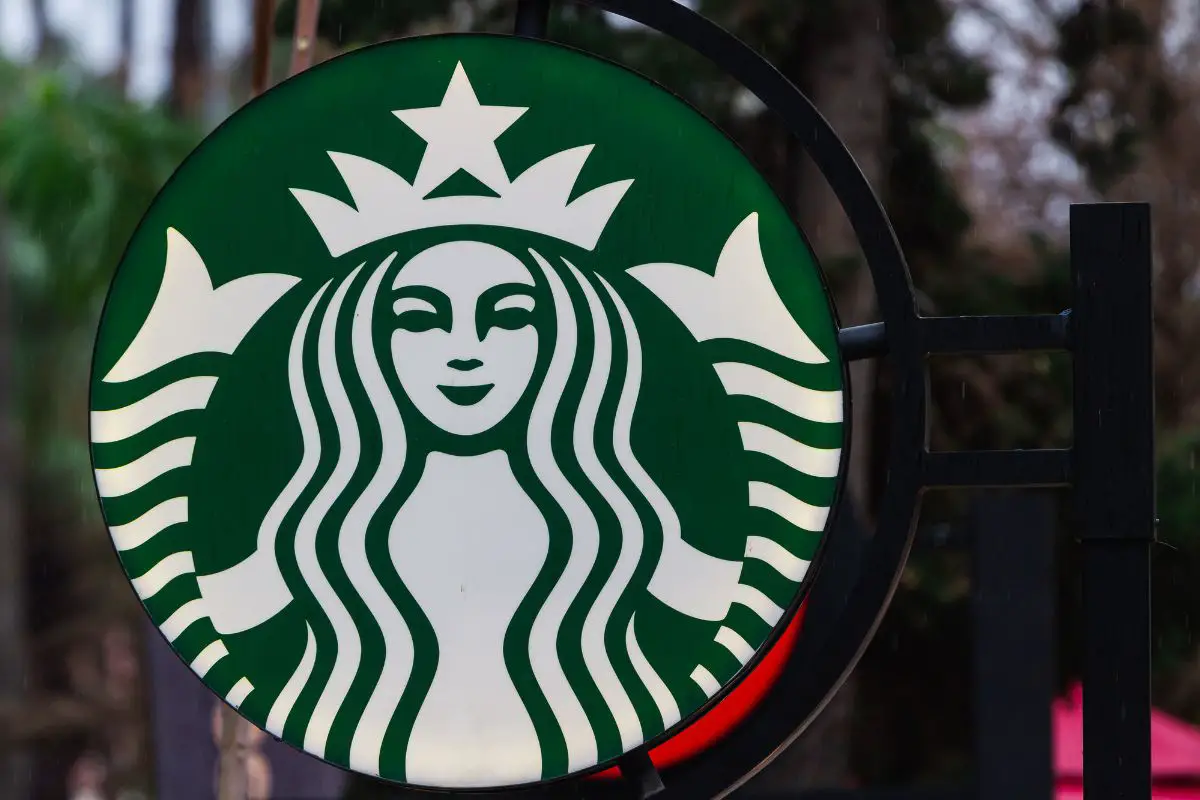In this article, readers will embark on a historical and cultural journey through the world of traditional coffee houses and their evolution over time. Beginning with an overview of the origins and evolution of coffee houses as important social spaces, the article shifts focus to the unique and intriguing Kaveh Kanes in Persian culture. The transition from traditional to modern coffee houses is explored, and the challenges and opportunities faced by Kaveh Kanes in today’s world are discussed in detail. Whether you are a coffee connoisseur, a history buff, or simply curious about the world of coffee houses, this article offers an engaging and comprehensive analysis of the enduring appeal and cultural significance of these social spaces.

History of Traditional Coffee Houses
Origin of Coffee Houses
The history of traditional coffee houses dates back to the 15th century in the Arabian Peninsula, where coffee was first discovered and brewed in Yemen. Coffee was initially used by Sufis during night prayers as it helped them stay awake. Soon, people began to consume coffee in their homes, and it eventually led to the establishment of the first coffee houses, known as qahwa.
The first known coffee house was opened in Constantinople (modern-day Istanbul) in 1475. Coffee houses then started to spread across the Ottoman Empire, and other major cities such as Cairo and Damascus also saw the opening of coffee houses.
In the 17th century, coffee houses began to emerge throughout Europe. The first European coffee house was opened in Venice in 1645, followed by other cities such as Vienna, Paris, and London. By the 18th century, coffee houses were a common sight in Europe and were considered an essential part of urban life. They became a hub for socializing, discussing politics, conducting business, and enjoying music and art.
Role of Coffee Houses in Social Interaction
Over time, coffee houses have played a significant role in social interaction, as they have become places where people from all walks of life gather to share ideas, network, and discuss a wide range of topics. The relaxed atmosphere of coffee houses allowed for free flow of conversation, which facilitated the exchange of ideas and intellectual discourse. Many coffee houses have also played host to artists, writers, and philosophers, providing them with a place for creative expression and inspiration.
During the Age of Enlightenment, coffee houses in Europe became popular venues for intellectual debates, scientific discovery, and cultural exchange. They were also significant in shaping the modern newspaper industry, as they served as meeting places for journalists, writers, and editors to share stories.
In the 20th century, the Beat Generation, a literary movement in the United States, embraced the coffee house culture, as places like Café Trieste in San Francisco and Caffe Reggio in New York City served as gathering spots for writers, poets, and musicians.
Evolution of Coffee House Designs and Interiors
The design and interior of coffee houses have evolved over the centuries, with each epoch reflecting its own unique style and cultural zeitgeist. Early coffee houses in the Ottoman Empire were characterized by opulent decorations and intricate patterns. The interiors often featured long seated benches, called divans, where people would sit on floor cushions and enjoy their coffee.
In Europe, coffee houses developed their own distinctive styles. The Viennese coffee house, for example, was known for its elegant and comfortable atmosphere, furnished with marble tables, Thonet chairs, chandeliers, and rich fabrics. The classic Parisian café, on the other hand, featured small round tables with wicker or iron chairs, outdoor terraces, and large mirrors that enhanced the airiness of the space.
Modern-day coffee houses have embraced different design approaches, ranging from rustic industrial styles with exposed brick walls and concrete flooring to minimalist, Scandinavian-inspired interiors with clean lines and natural materials.
Coffee House Culture around the World
Today, coffee house culture varies around the world, reflecting the unique customs and traditions of each region. In Italy, espresso bars are the norm, where people quickly drink their coffee while standing at a counter. In Japan, “kissaten” are traditional-style coffee houses, known for their slow coffee brewing methods and elaborate latte art.
Australian and New Zealand coffee culture is renowned for its high-quality espresso, flat whites, and a focus on ethical sourcing of beans. In North America, large coffee chains like Starbucks have popularized the “third-wave” coffee movement, focusing on sustainable practices and artisanal brewing techniques.
In the Middle East, coffee houses continue to serve as important social gathering spaces, offering a blend of traditional and modern aspects. Lastly, in Ethiopia, the birthplace of coffee, traditional coffee ceremonies are still widely practiced, where coffee is roasted, brewed, and served in an elaborate and communal experience.
Overall, the history of traditional coffee houses is a fascinating tapestry of social, cultural, and political influences that continue to shape the way we consume and enjoy coffee today. As the coffee house culture continues to evolve, it remains a vital part of our daily lives, bringing people together in a shared love for this timeless beverage.
The Emergence of Kaveh Kanes

Origins and Background
Kaveh Kanes, also known as the Blacksmiths of Kāveh, has its roots in ancient Persian mythology and folklore. It refers to an influential character named Kaveh, who played a pivotal role in Persian mythology and history. Kaveh is a legendary figure who comes from the ancient land of Persia, now known as Iran. He was a blacksmith by profession and is symbolically linked to the essence of forging, creation, and craftsmanship.
The character of Kaveh is often associated with the founding myth of Iran and the establishment of the Iranian nation under the rule of Fereydun (or Fereidoon), an iconic figure in Persian mythology. In the epic story of the Shahnameh, written by the Persian poet Ferdowsi in the 10th century, Kaveh played a significant role in overthrowing the tyrannical ruler Zahhak, who was known for his atrocities and oppression.
Legend has it that Zahhak demanded two human brains every day to feed the two monstrous snakes that had grown on his shoulders. Kaveh, who had already lost 17 sons to Zahhak’s insatiable appetite, refused to offer his last surviving son. He stood courageous against Zahhak’s tyranny and inspired the people of Persia to rise and join the efforts to end his brutal reign.
Characteristics of Kaveh Kanes
Kaveh is often depicted as a strong, muscular, and brave figure. As a blacksmith, he represents the virtues of hard work, perseverance, and dedication. He stands as a symbol of courage and principles, demonstrating high moral values and unwavering faith in justice.
In one of the most emblematic moments in the story, Kaveh raises a banner, called the Derafsh Kaviani (or Kāveh Flag), in defiance of Zahhak’s dictatorship. The banner, crafted from the leather apron of a blacksmith, symbolizes unity, resistance, and the collective strength of the people. This act ignited the spirit of rebellion among the oppressed people who ultimately united under Fereydun’s leadership, overthrew Zahhak, and restored peace, freedom, and justice in the land.
Kaveh’s heroism and bravery do not stem from a divine origin or magical powers but rather come from his innate human qualities. He symbolizes the potential for greatness within every individual and the power of collective action for change.
Significance in Persian Culture
Kaveh Kanes holds a significant place in Persian culture and mythology, representing a powerful symbol of resistance, unity, and the struggle against tyranny. The character of Kaveh and his actions remind Iranians of their rich cultural heritage and centuries-old tradition of valuing justice, freedom, and courage.
Moreover, Kaveh’s story also emphasizes the importance of craftsmanship and honest labor in society. As a blacksmith, he played a crucial role in the formation of a just and prosperous nation. His profession embodies the significance of diligent work, creativity, and self-sufficiency.
In contemporary Iran, Kaveh Kanes serves as a reminder of the struggle for freedom and justice that the Iranian nation has faced throughout its history. It inspires a sense of national pride, solidarity, and resistance against oppression.
Role of Kaveh Kanes in Literature, Poetry, and Art
The story of Kaveh Kanes has been imprinted in various forms of Persian literature, poetry, and art. Perhaps the most well-known representation of Kaveh Kanes is in Ferdowsi’s epic poem, the Shahnameh. It is considered one of the most important works of Persian literature and demonstrates Iran’s long-lasting cultural and historical roots.
In addition to traditional literature, Kaveh Kanes has been portrayed in contemporary arts, including paintings, sculptures, and theatrical performances. Iranian artists have employed the symbol of Kaveh and his rebellion against tyranny to convey messages of unity, strength, and resilience.
Moreover, the Derafsh Kaviani flag, forged from Kaveh’s blacksmith apron, has also taken on a symbolic significance in Iranian culture. It is sometimes used as an emblem of nationalism and solidarity during political movements and protests against oppression or injustice. It embodies the same spirit of resistance and unity that characterized Kaveh’s historic stand.
In conclusion, Kaveh Kanes is an enduring symbol within Persian culture, representing a shared struggle for justice and freedom that transcends time. Through literature, poetry, and art, the tale of the courageous blacksmith resonates today as a source of inspiration and empowerment for those facing injustice and tyranny.
Transition from Traditional to Modern Coffee Houses
The transition from traditional to modern coffee houses is a fascinating phenomenon, reflecting the changing preferences and values of contemporary society. This transformation has been influenced by various factors, ranging from globalization and the introduction of new coffee brewing techniques to the influence of technology and changing social trends. In this article, we examine each of these factors and their role in shaping the modern coffee house experience.
Globalization and Cultural Exchange
Globalization has played a major role in the evolution of coffee houses, as it has facilitated the exchange of cultural ideas and practices, allowing coffee enthusiasts around the world to experience and appreciate diverse coffee traditions. This cultural exchange has led to the birth of innovative coffee house concepts and menus that draw inspiration from different regions and cultures, offering customers a truly global coffee experience.
The rise of international coffee chains such as Starbucks, Costa Coffee, and Café Coffee Day has further fueled this global exchange, bringing popular coffee beverages and snacks from across the world to the local customer’s table. These global coffee chains have also introduced new cultural practices and experiential elements to the coffee house environment, like using cozy and comfortable furnishings, offering free Wi-Fi, and providing ample space for socializing or working. As a result, modern coffee houses have become a melting pot of various cultural influences, providing customers with not just a cup of coffee but a unique and diverse experience.
Introduction of New Coffee Brewing Techniques
Another factor that has driven the transition from traditional to modern coffee houses is the introduction of new coffee brewing techniques. The influx of new brewing methods, such as pour-over, AeroPress, syphon, and cold brew, has allowed coffee houses to provide their customers with a wider variety of flavors and tastes, elevating the coffee experience to a more intricate and personalized level.
These new brewing methods, coupled with the availability of diverse coffee beans sourced from around the world, have enabled coffee houses to cater to the discerning tastes of coffee connoisseurs and enthusiasts alike. Today, modern coffee houses pride themselves on their ability to offer an extensive range of coffee options, from single-origin beans and unique blends to various brewing methods that highlight the unique characteristics of the beans. This focus on coffee craftsmanship and customization is a significant departure from the traditional coffee house model, which typically centered around a more limited menu of coffee offerings and brewing techniques.
Influence of Technology on Coffee House Culture
Technology has also played a significant role in shaping the modern coffee house experience. From efficient ordering systems that streamline the customer’s transaction process to state-of-the-art espresso machines that offer precision and consistency in brewing, technology has greatly enhanced the efficiency and quality of the coffee house experience.
Moreover, the widespread availability of Wi-Fi in modern coffee houses has turned these establishments into popular remote workspaces and social hubs, as customers can now easily stay connected while enjoying their cup of coffee. This is in stark contrast to the traditional coffee house environment, where the focus was primarily on face-to-face social interactions.
Additionally, modern coffee houses often utilize various digital platforms, such as social media and mobile apps, to engage with their customers, inform them about new offerings, and enhance their overall experience. This digital presence has become an integral part of the modern coffee house identity, further integrating technology into the coffee-drinking experience.
Impact of Changing Social Trends
Finally, the evolution of coffee houses can be attributed to changing social trends and customer preferences. As people increasingly value experiences and unique offerings, modern coffee houses have adapted by offering a variety of experiential elements, such as live music, art displays, and workshops, to create a dynamic and engaging environment.
Moreover, there has been a growing emphasis on sustainability and ethical sourcing within the coffee industry, as consumers become more cognizant of the impact of their choices on the environment and society at large. Modern coffee houses have responded to this trend by offering eco-friendly products and prioritizing transparency in their supply chains, making the coffee-drinking experience more ethical and responsible.
In conclusion, the transition from traditional to modern coffee houses has been driven by a variety of factors, including globalization, the introduction of new coffee brewing techniques, the influence of technology, and changing social trends. As a result, the modern coffee house experience is characterized by the integration of diverse cultural influences, a focus on coffee craftsmanship and personalization, the utilization of technology to enhance both efficiency and connectivity, and an emphasis on sustainability and social responsibility.
Evolution of Modern Kaveh Kanes

Kaveh Kanes, or coffee houses, have been integral to the social and cultural fabric of societies across the globe for centuries. These establishments have evolved significantly over the years, transforming from simple venues offering coffee to multi-faceted spaces that combine design, ambiance, diverse menus, and a strong connection to today’s social dynamics.
Design, Ambiance, and Architectural Transformation
The transformation of Kaveh Kanes began with their design, ambiance, and architectural features. Early coffee houses were simple and functional spaces, often located in small rooms with basic furnishings. As the demand for coffee grew and the clientele diversified, the design of these establishments elevated to accommodate different social structures, and, in many cases, create a unique visual identity.
Modern Kaveh Kanes encompass a variety of architectural styles and interior design concepts. Some opt for a minimalist, industrial look with exposed bricks, metal fixtures, and simple furniture. Others focus on a cozy, welcoming atmosphere with plush seating, warm lighting, and eclectic décor. In some cases, themed or concept coffee houses are emerging, where the design is tailored to support an overarching theme or narrative, such as a bookstore or art gallery.
In recent years, there has been a greater focus on sustainability and eco-friendliness in Kaveh Kanes’ design. This includes using recycled building materials, incorporating plants and greenery, and encouraging eco-friendly practices amongst customers, such as the use of reusable coffee cups.
Diverse Menu Offerings: Specialty Coffee and More
The increased sophistication in the coffee industry has led to more diverse menu offerings in modern Kaveh Kanes. Specialty coffee, which involves high-quality beans, expert brewing techniques, and unique flavors, has become a significant part of most coffee house menus. Baristas are now seen as skilled professionals who are able to showcase their knowledge and passion for coffee through various brewing methods and innovative drinks.
In addition to specialty coffee, Kaveh Kanes are expanding their menus to include diverse selections of tea, non-coffee beverages, and food items that cater to different tastes and dietary requirements. Some establishments even offer curated food pairings to enhance the customers’ experience and appreciation of their coffee.
Role in Contemporary Society
Modern Kaveh Kanes continue to play a significant role in contemporary society, serving as essential social hubs where people gather to connect, work, study, and unwind. They provide a sense of belonging and foster the creation of communities, blending people from different social, economic, and cultural backgrounds.
The rise of remote work has also increased the importance of Kaveh Kanes as spaces for productive co-working. This trend led to the development of specialized coffee houses that cater explicitly to the needs of freelancers and remote workers, providing high-speed internet, power outlets, and collaborative workspaces.
Moreover, Kaveh Kanes are now actively engaging in social and environmental initiatives, from supporting local artists, hosting community events, providing educational workshops, and participating in sustainable practices, such as promoting fair trade and reducing waste.
Notable Modern Kaveh Kanes: Examples and Comparisons
There is a plethora of modern Kaveh Kanes worldwide, each with its unique atmosphere, menu offerings, and social initiatives. Some notable examples include:
- Stumptown Coffee Roasters (USA): With locations in various American cities, Stumptown is known for its high-quality specialty coffee and sustainable approach, working directly with farmers to source ethically produced beans and featuring a menu based on in-season products.
- Antico Caffè del Moro (Italy): This historic coffee house in Rome has been serving customers since 1760, providing an authentic Italian atmosphere and a diverse menu that includes coffee, pastries, and traditional Roman dishes.
- Fuglen (Norway/Japan): This Oslo-born Kaveh Kane has expanded to Tokyo, blending Scandinavian design aesthetics and Japanese craftsmanship. The establishment serves expertly crafted coffee and cocktails, and the space transforms into a bar in the evenings.
- The Coffee Collective (Denmark): This Copenhagen-based chain is dedicated to sustainability, including fair trade practices and direct trade relationships with farmers. They are also known for their expert baristas and meticulously crafted coffee drinks.
These examples showcase the diversity and evolution of modern Kaveh Kanes, reflecting the unique cultural, social, and economic contexts in which they operate. Kaveh Kanes have transcended their original purpose as simple venues for coffee and have become essential social institutions that cater to the needs, desires, and aspirations of contemporary society.
Challenges and Opportunities for Kaveh Kanes

Competition with Global Coffee House Chains
One of the main challenges faced by Kaveh Kanes is the competition from global coffee house chains like Starbucks, Costa Coffee, and Dunkin’ Donuts. These international chains, with their massive marketing budgets and strong brand recognition, pose a considerable threat to local coffee shops like Kaveh Kanes.
To overcome this challenge, Kaveh Kanes must focus on creating a unique selling proposition (USP) that sets them apart from global chains. Providing a localized and authentic experience could be the key to differentiating their business. Kaveh Kanes should emphasize its history and cultural significance in its branding, which will make customers appreciate the rich heritage.
Additionally, Kaveh Kanes can pursue opportunities in niche markets that are less targeted by global chains. For example, they can focus on offering specialty coffee and tea blends that are native to their region or emphasizing craftsmanship in their preparations. Collaborating with local artists, musicians, and other cultural influencers can help create a vibrant, community-driven atmosphere that appeals to customers seeking a unique experience.
Adapting to Social Media and Digital Technologies
Another challenge faced by Kaveh Kanes is adapting to the rise of social media and digital technology in the marketing landscape. To remain competitive and gain visibility, it is essential to have a robust online presence across various platforms, including Instagram, Facebook, and Twitter.
To tackle this challenge, Kaveh Kanes can invest in a dedicated social media manager to create compelling content, manage online communities, and engage with customers. By developing a comprehensive social media strategy, they can amplify their brand through word-of-mouth marketing, user-generated content, and targeted advertising.
Additionally, Kaveh Kanes should leverage digital technologies to improve the customer experience, such as developing a mobile app for placing orders, offering free Wi-Fi, implementing a loyalty program and enabling online reservations. This approach will demonstrate that the business is forward-thinking and responsive to customer needs.
Balancing Modernization and Cultural Heritage
In the journey to modernize and grow, Kaveh Kanes must strike a balance between adapting to new trends and preserving its cultural heritage. Embracing innovation could lead to a more efficient and successful business; however, it is essential not to lose sight of the qualities that attract customers in the first place.
To maintain this balance, Kaveh Kanes can take a thoughtful approach to change, implementing innovation while respecting its roots. For example, they can introduce new menu items and beverages, but ensure they complement traditional offerings. Additionally, the interior design and atmosphere should blend modern elements with classic Persian aesthetics, celebrating the past while remaining contemporary.
Environmental and Sustainability Considerations
As consumers become increasingly concerned about the environment and sustainability, Kaveh Kanes must ensure its practices align with these values. The business can face challenges with waste management, water conservation, energy efficiency, and sustainable sourcing of raw materials.
To address these challenges, Kaveh Kanes can adopt eco-friendly practices such as offering reusable cups, minimizing food waste, using energy-efficient appliances, and sourcing coffee beans ethically. Additionally, the business should consider collaborating with local suppliers and farmers to support the local economy and promote sustainable production.
By adopting sustainable practices, Kaveh Kanes not only mitigates potential backlash from environmentally-aware customers but also stands to gain a competitive advantage. Consumers are increasingly choosing businesses that demonstrate a commitment to sustainability, and Kaveh Kanes can capitalize on this trend by marketing its eco-friendly practices and social responsibility initiatives.
FAQs on Evolution of Kaveh Kanes from Traditional to Modern Coffee Houses
1. What is the history of Kaveh Kanes, and how did they evolve from traditional to modern coffee houses?
Kaveh Kanes, Persian coffee houses, emerged in the 16th century, serving as gathering places for socializing, intellectual discussions, art, and music. The evolution to modern coffee houses occurred as Kaveh Kanes adapted to contemporary design, technology, and diversified beverage and food menus (Haine, 1998).
2. How did modern coffee houses incorporate traditional Kaveh Kanes values and aesthetics?
Modern coffee houses embraced the core values of Kaveh Kanes by maintaining the essential element of social interaction. They also incorporated traditional architectural elements, such as arches and geometrical patterns, with modern interior design, while preserving the rich history of Persian coffee culture (Haine, 1998).
3. In what ways have the social functions of Kaveh Kanes changed in modern coffee houses?
Although still serving as social hubs, modern coffee houses have expanded the original functions of Kaveh Kanes. They now provide workspaces, host art exhibitions, and promote various types of performances, reflecting the contemporary shift towards coffee houses as locations for both leisure and productivity (Pany, 2002).
4. How has the menu evolved in modern coffee houses compared to traditional Kaveh Kanes?
While traditional Kaveh Kanes primarily served coffee, tea, and sweetmeats, modern coffee houses expanded their offerings to include a wide range of beverages, like specialty coffees and smoothies. They also introduced various food items, such as sandwiches, salads, and desserts, catering to diverse customer preferences (Haine, 1998).
5. How has technology influenced the evolution of modern coffee houses from traditional Kaveh Kanes?
Technology has played a significant role in the transformation of Kaveh Kanes. The introduction of Wi-Fi in modern coffee houses facilitated work and leisure activities, while advanced coffee brewing methods improved the quality and variety of coffee beverages (Pany, 2002).
6. What are the crucial elements differentiating a modern coffee house from a traditional Kaveh Kane?
While the essence of social interaction remains, modern coffee houses feature contemporary design, diverse beverage and food menus, and technology integration. They provide workspaces, encourage cultural events, and promote a blending of both traditional and contemporary coffee culture (Haine, 1998).